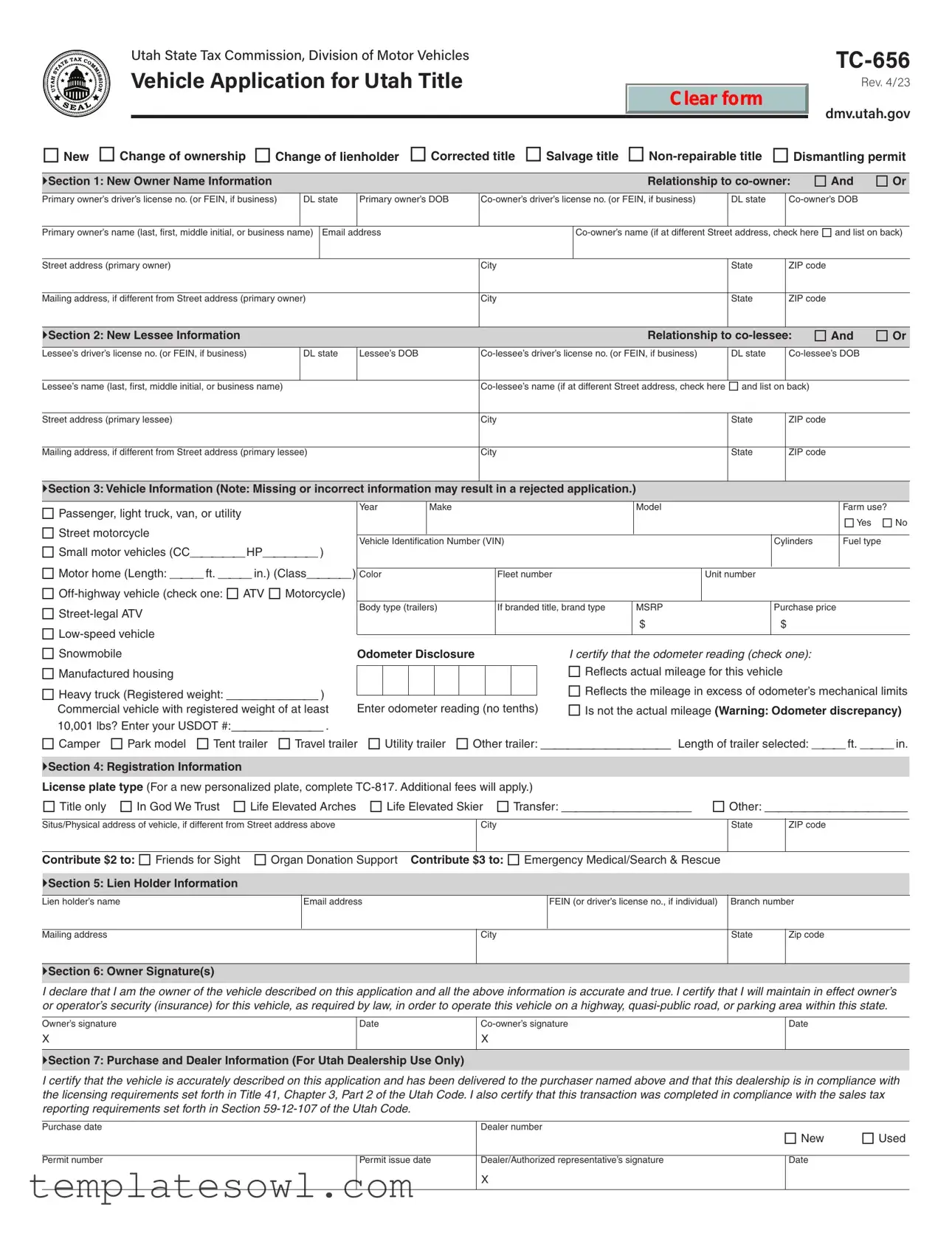What is the purpose of the Utah DMV TC 656 form?
The Utah DMV TC 656 form is primarily used for various transactions involving vehicle ownership. This includes applying for a new title, changing ownership, updating lienholder information, or obtaining a corrected title. It serves as an essential document for both vehicle owners and the Department of Motor Vehicles to maintain accurate records.
Who needs to fill out the TC 656 form?
Any individual or business that is involved in a vehicle title transaction in Utah will need to complete the TC 656 form. This includes primary owners, co-owners, lessees, and lienholders. Essentially, if you're buying, selling, or modifying the ownership details of a vehicle, this form will likely be necessary.
What information is required in Section 1 of the form?
Section 1 focuses on the new owner name information. Here, the primary owner's and co-owner's names, driver’s license numbers, dates of birth, and contact details are required. If the owners have different mailing addresses, there is an option to provide that information on the back of the form. It's essential to ensure that all information is accurate to avoid delays.
How do I report odometer readings on the TC 656 form?
Odometer readings are reported in Section 3 of the TC 656 form. Applicants must select between several options: whether the mileage reflects actual mileage, exceeds the mechanical limits, or is not the actual mileage. Providing accurate odometer readings helps prevent potential issues related to mileage fraud.
What happens if I make a mistake on the form?
If there's a mistake on the TC 656 form, it may result in your application being rejected. It is crucial to double-check all entries for accuracy before submission. If you notice an error after submitting, you might need to complete a new form to rectify the mistake.
Are there any fees associated with applying using the TC 656 form?
Yes, there may be fees associated with vehicle title transactions. If you request new personalized plates, for example, additional fees will apply. Always confirm the specific fees with the Utah DMV to ensure you come prepared when submitting your form.
How do I designate a lienholder on the TC 656 form?
Section 5 of the TC 656 form is dedicated to lienholder information. This section requires the lienholder's name, mailing address, and either their FEIN or driver’s license number. Clearly providing this information is crucial, especially for those financing their vehicle purchases.
What should I do if I'm co-owning a vehicle?
If you are co-owning a vehicle, both owners must provide their details in Section 1 of the TC 656 form. You will need to indicate the relationship and ensure that signatures from both owners are included at the end of the form. This confirms mutual agreement on the ownership information shared.
Is there a section for charitable contributions on the form?
Yes, the TC 656 form includes optional sections for making contributions to various causes, such as organ donation support and search and rescue missions. You can choose to contribute $2 or $3 towards these initiatives when filling out the form, making it easy to support worthwhile causes as part of your vehicle registration process.
How do I submit the completed TC 656 form?
Once you have completed the TC 656 form, you can submit it in person at a Utah DMV office. In some cases, you may also be able to mail your completed form to the appropriate DMV office. Always check the latest guidelines on the Utah DMV website to determine the best submission method for your specific situation.

